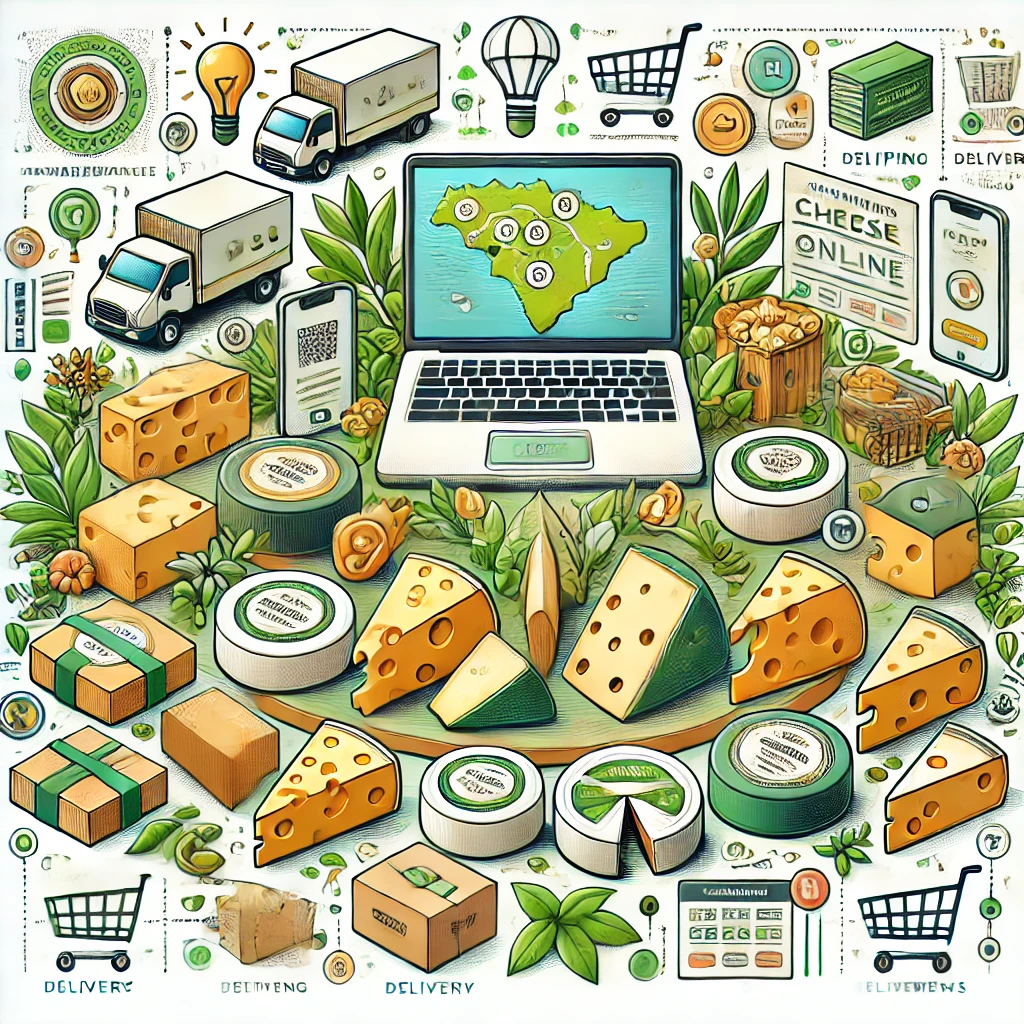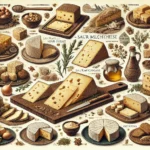Brazil’s cheese culture is booming—from Minas Gerais farmstead producers to São Paulo gourmet markets and Rio’s specialty delivery platforms. As digital commerce expands and consumer demand for artisanal food rises, selling cheese online in Brazil has transformed from a niche trade to a serious business opportunity.
But success requires more than uploading photos and waiting for a purchase. It involves hygiene regulations, cold-chain logistics, shelf-life planning, payment systems, labeling rules, and smart branding. Whether you produce queijo minas artesanal, queijo coalho, burrata, or premium canastra, this guide will help you build a profitable cheese-based e-commerce strategy in Brazil.
🇧🇷 Why Online Cheese Sales Are Growing in Brazil
Brazilian consumers have shifted toward:
-
gourmet dairy
-
authenticated origin products
-
sustainable farm-to-table trades
-
convenience with home delivery
Key Market Drivers
| Factor | Impact |
|---|---|
| Artisan cheese recognition (Queijo Minas, Canastra, Serro) | boosts demand for regional DOP cheeses |
| Delivery apps & online supermarkets | wider consumer reach |
| Social media + WhatsApp commerce | direct farm-to-buyer sales |
| Cold-chain improvements | safer national deliveries |
Many cheese producers now sell directly from farms, bypassing wholesale margins.
🧀 What Types of Cheese Sell Best Online?
Some cheeses are naturally suited for logistics, shelf life, and safe transport.
High-Demand Categories
| Cheese Style | Why It Performs Well |
|---|---|
| Queijo Minas Artesanal | iconic Brazilian identity + aging adaptation |
| Queijo Canastra | strong brand recognition across Brazil |
| Queijo Coalho | grilling popularity & regional tourism nostalgia |
| Blue cheeses (Gorgonzola, Roquefort style) | specialty gourmet segment |
| Fresh mozzarella & burrata | premium restaurant delivery boom |
| Queijo Parmesão | long shelf life & easy shipping |
Mixed tasting boxes combining minas, canastra, goat cheese, and coalho also convert extremely well online.
🛒 Choosing a Sales Platform: Where to Sell Cheese Online
1. Own E-commerce Website
-
full brand control
-
recurring subscription cheese boxes
-
ideal long-term growth
2. Marketplaces
-
Mercado Livre, Shopee (with cold-chain caution)
-
Amazon Food
3. Instagram + WhatsApp Sales
-
highly effective for artisanal producers
-
photos, reels, and farm storytelling increase trust
4. Delivery Apps
-
iFood, Rappi, Uber Eats
-
ideal for urban burrata, mozzarella, and coalho
5. Online Gourmet Stores
-
Casa Santa Luzia
-
Empório Santa Maria
-
Empórios across Belo Horizonte & Curitiba
📦 Packaging & Cold-Chain Logistics
Cheese is temperature-sensitive, so Brazil’s humid climate requires proper cold maintenance.
Essential Packaging
| Component | Purpose |
|---|---|
| Vacuum sealing | protects against bacteria + shelf life |
| Thermal isothermal bags | preserves temperature in transit |
| Gel ice packs | maintains 0–8°C zone |
| Styrofoam or insulated boxes | shields from heat & humidity |
Avoid sending fresh cheeses without certified cold couriers.
Recommended Couriers
-
Correios SEDEX Frio (where available)
-
Loggi Fresh
-
Lalamove Refrigerado (urban)
-
Specialized private cold carriers
📜 Legal Requirements & Cheese Regulations in Brazil
Selling cheese is regulated by:
-
MAPA (Ministério da Agricultura)
-
Sisbi-POA
-
Inspection seals: SIF, SIM, SISBI, SIE
What You MUST Have to Sell Legally
| Requirement | Notes |
|---|---|
| Inspection seal (SIF/SIE/SIM/SISBI) | proof of sanitary control |
| Proper labeling | ingredients, lot, weight, storage |
| expiration date | must be clearly printed |
| allergen warnings | “contém lactose” etc. |
| CNPJ (for full commercial scaling) | MEI depending on business model |
Without correct inspection, cheese cannot legally travel interstate unless under SISBI equivalence.
💰 Pricing Strategy: How to Price Cheese Online
Formula
Typical Margins
| Product | Margin Range |
|---|---|
| Fresh cheese (burrata, minas frescal) | 25–40% |
| Aged cheese (canastra, parmesão) | 35–60% |
| Premium artisanal boxes | 45–70% |
Bundling (cheese + jam + crackers) increases average order value.
📣 Marketing & Branding Tips
1. Storytelling Wins
-
highlight farm origin
-
milk type (cow, goat, buffalo)
-
artisan producers
-
aging time
2. Instagram Reels Strategy
-
cheese slicing ASMR
-
farm visits
-
burrata oozing videos
-
grill shots of queijo coalho
3. Subscription Boxes
-
monthly Minas Gerais cheese box
-
seasonal aging themes
-
wine + cheese pairing deliveries
4. Influencer Collaborations
Partner with:
-
food bloggers
-
churrasco channels
-
wine sommeliers
💳 Payments & Checkout
Offer multiple payment formats for higher conversion:
-
PIX (highest Brazilian acceptance)
-
credit card installments
-
boleto bancário
-
PayPal / Mercado Pago
Reduce Abandoned Carts
-
clear delivery windows
-
shipping cost calculator
-
WhatsApp live support
⭐ Final Summary
Selling cheese online in Brazil blends:
-
artisanal dairy identity
-
digital transformation
-
cold-chain precision
-
legal compliance
From Minas Gerais to São Paulo and beyond, cheese enters modern commerce with tradition intact. With correct packaging, MAPA compliance, smart marketing, and delivery partners, cheese sellers can scale from small farms to national reach while maintaining authenticity.
The era of farm-to-online-table cheese has officially arrived in Brazil.
FAQs — Selling Cheese Online in Brazil
1. Can any cheese be shipped nationwide?
Only cheeses with SISBI/SIF/SIM/SIE inspection can cross state borders legally.
2. Which cheeses are easiest to ship?
Aged Canastra, Minas, Parmesan, and coalho—fresh burrata requires strict refrigeration.
3. Can I sell without CNPJ?
Small-scale local sales are possible, but full e-commerce and interstate sales require CNPJ and inspection seals.
4. Does Brazil require refrigeration during delivery?
Yes—cheese must remain in a 0–8°C cold chain during transport.
5. Which platform works best for beginners?
Instagram + WhatsApp with PIX payments, then scale to Mercado Livre or your own site.



